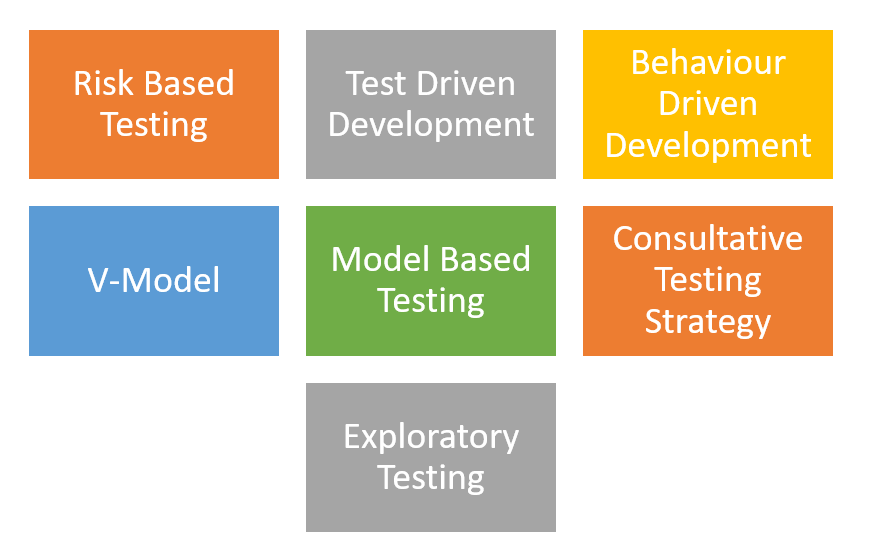In the ever-evolving landscape of software development, the need for a well-defined Test Strategy in Software Testing is paramount. This need stems from the growing complexity of software systems and the critical role they play in the functioning of modern businesses and everyday life. A Test Strategy serves as a roadmap, providing clear guidelines and a structured approach to the testing process. It ensures that all testing activities are aligned with the project’s objectives and business goals.
Without a Test Strategy, testing efforts can become disjointed and inefficient, leading to gaps in coverage, redundant testing efforts, and ultimately, a higher risk of software defects slipping through into production. The strategy helps in optimizing resource allocation and time management, ensuring that testing is both effective and economical.
What is a Test Strategy?
To know What is a Test Strategy? It is a crucial in managing the risks associated with software development. It identifies potential risks in the testing process and outlines strategies for managing these risks, thereby minimizing the likelihood of project delays and cost overruns.
The document also sets the stage for a consistent testing methodology across the organization, fostering best practices and standardization. This consistency is vital in maintaining the quality of software over time, especially in large organizations where multiple teams work on different aspects of the same project. In essence, a Test Strategy is not just a tool for planning but a critical component in ensuring the delivery of high-quality, reliable software in a timely and cost-effective manner.
Types of Test Strategy in Software Testing
In the intricate world of software development, the adoption of a suitable testing strategy is pivotal for ensuring the quality and reliability of the final product. Each testing strategy offers a unique approach and caters to different aspects of the software development lifecycle. Let’s delve into some of the prominent types of Test Strategy in Software Testing that have significantly shaped modern software testing practices.
1. Risk-Based Testing: Software Test Strategy
This is a Software Test Strategy that prioritizes testing activities based on the risk assessment of various software components. In this approach, components that are deemed high risk – due to factors like complexity, business importance, or past defects – are tested more rigorously and earlier in the testing cycle. This strategy is effective in optimizing resources and time, ensuring that the most critical parts of the application are robust and reliable.
2. Consultative Test Strategy and Test Plan
This Consultative Test Strategy and Test Plan involves a collaborative approach where stakeholders, including business analysts, developers, and users, are actively involved in the testing process. This strategy leverages the diverse perspectives and expertise of all stakeholders to identify key areas of focus, potential risks, and the most appropriate testing methodologies. It fosters a shared understanding of the project goals and ensures that the testing aligns with business requirements and user expectations.
3. Exploratory Testing
This is an approach where testers dynamically explore and test the software without predefined test cases or scripts. This strategy relies heavily on the tester’s experience, intuition, and creativity. It is particularly effective in uncovering issues that may not be easily identified through structured testing approaches. Exploratory testing is often used in conjunction with other testing strategies to enhance test coverage and discover unexpected or hidden issues.
4. V-Model Testing Strategy
This is a development methodology that emphasizes the parallel relationship between development stages and their corresponding testing phases. Each development phase, such as requirements specification or design, has a corresponding testing phase, like acceptance testing or system testing. This model ensures that testing is integrated throughout the development process, facilitating early detection and resolution of defects.
5. Behavior-Driven Development (BDD) Testing
This Test Strategy in Software Testing focuses on the behavior of the software from the user’s perspective. In BDD, testing begins with the definition of expected behavior and user stories. Tests are then designed to validate that the software behaves as expected in various scenarios. This approach bridges the gap between technical and non-technical stakeholders, ensuring that the software meets the intended user requirements.
6. Test-Driven Development (TDD)
This is an approach where test cases are written before the actual code is developed. Developers first write a failing test case that defines a desired improvement or new function, then produce the minimum amount of code to pass the test, and finally refactor the new code to acceptable standards. TDD promotes simple designs and inspires confidence in the software’s functionality.
7. Model-Based Testing Strategy
involves creating models that represent the desired behavior of the system under test. These models are used to generate test cases automatically. This approach is particularly useful for complex systems, as it helps in visualizing the requirements and generating comprehensive test scenarios.
Each of these Test Strategies in Software Testing offers distinct advantages and can be chosen based on the specific requirements, complexity, and context of the software project. The key is to understand the nuances of each strategy and apply them judiciously to enhance the quality, efficiency, and effectiveness of the software testing process.
Template for Test Strategies in Software Testing
| You May Also Be Interested to Know- | |
| 1. | Test Case Design |
| 2. | Software Development Engineer Test |
| 3. | Mobile Testing Tools Automation |

